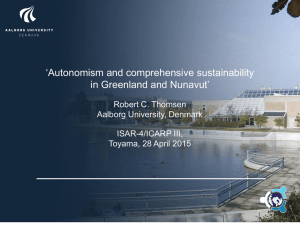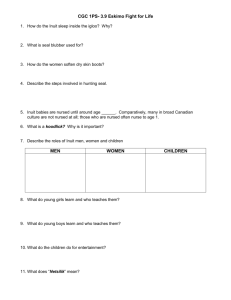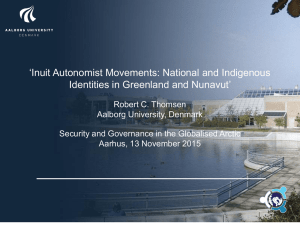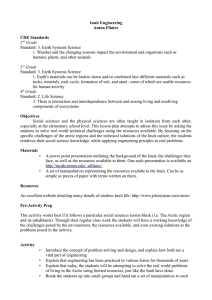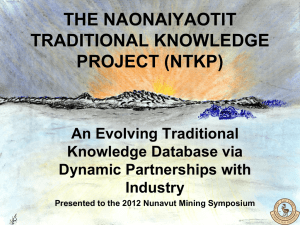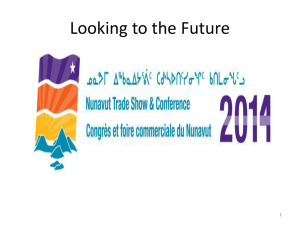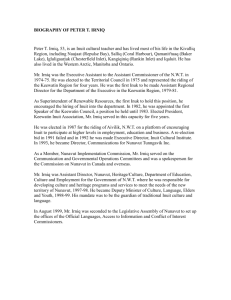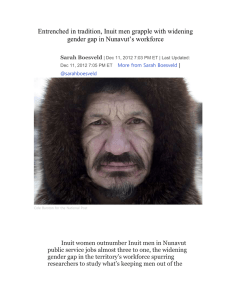Thomsen, NACS-XI, ArcticColl_Ids_Autonomisms
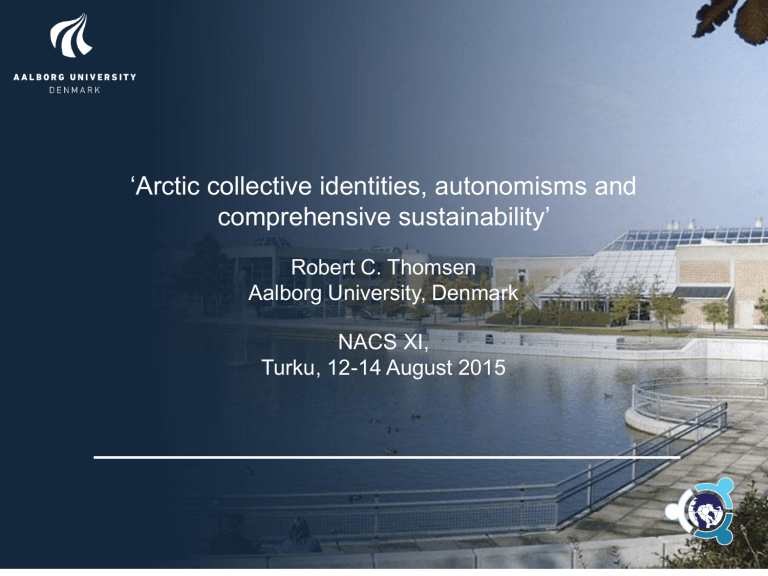
‘Arctic collective identities, autonomisms and comprehensive sustainability ’
Robert C. Thomsen
Aalborg University, Denmark
NACS XI,
Turku, 12-14 August 2015
Comprehensive sustainable development
Sustainable development is: “development that meets the needs of the present without compromising the ability of future generations to meet their own needs”
( Our Common Future 1987, 24).
• Sustainability goes beyond ‘ecologically sound’.
‘Comprehensive sustainable development’:
Ecological, economic, social, cultural, political and legal sustainability
(inter-connected, inter-dependent)
Different perceptions of ‘peoplehood’ (who belongs to the collectivity)
=>
Different visions (autonomist demands)
Inuit collective identities and autonomisms
Pan-Inuit collective, indigenous identity (ICC)
-
Demands for the recognition of the rights of an indigenous transnational ‘Inuit polity’ (Shadian, 2014: 5)
“Though Inuit live across a far-reaching circumpolar region, we are united as a single people
. […] Inuit are an indigenous people […]. Central to our rights as a people is the right to self-determination.
[…] Recognition and respect for our right to selfdetermination is developing at varying paces and in various forms in the Arctic states in which we live.”
( ICC 2009 )
Inuit collective identities and autonomisms
Local Inuit collective identity (Nunavummiut)
- Demands for inclusion, with the recognition of indigenous minority rights.
“The Inuit of Nunavut see themselves as a part of Canada and are interested in further devolution of powers and in stronger cooperation and partnership [within existing] federal structures.” (Loukacheva, 2007: 16)
“Inuit exchanged Aboriginal title to all their traditional land in the Nunavut
Settlement Area for the rights and benefits set out in the NLCA […]. NTI coordinates and manages Inuit responsibilities set out in the NLCA and ensures that the federal and territorial governments fulfil their obligations.”
(Nunavut Tunngavik Incorporated, 2015)
Inuit collective identities and autonomisms
National (Inuit) identity (Greenlanders of Kalaallit Nunaat)
- Demands for the recognition of inherent national rights of selfgovernment; ultimately, full political independence
“Recognising that the people of Greenland is a people pursuant to international law with the right of selfdetermination […]. Decision regarding
Greenland’s independence shall be taken by the people of Greenland […].
Independence for Greenland shall imply that Greenland assumes sovereignty over the Greenland territory.”
( ‘Act on Greenland Self-Government’, 2009 )
Early conclusions
*
There is much difference in the way ‘Inuitness’ is constructed across the
Arctic, thus also diverging perceptions of the rights that can be claimed as a consequence of Indigeneity.
* In the long term, different visions may prevent Inuit from speaking with one voice, may even become the source of conflict between them
(AWG2016, AC).
* When central governments take the position that Indigenous peoples are basically entitled to some form of self-determination, solutions for sustainable political-constitutional and socio-cultural development must be as diverse as the Inuit indigenous/national collectivities -- and the demands, they seek to address.
